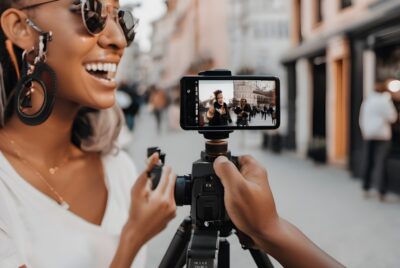Wildlife Photography: A Journey Into the Wild
If you’ve ever found yourself awe-struck by a lion’s roar or the flutter of a bird’s wings just as the sun rises, then you’re in for a ride. I’m here to walk you through the fascinating world of wildlife photography — not just with tips and gear lists, but with stories, lessons, and a good dose of encouragement.
What is Wildlife Photography?
Wildlife photography is all about capturing animals in their natural habitat. It’s raw, unpredictable, and full of surprises. Unlike studio photography, you can’t pose your subject. Wait. Observe. You blend into nature. And when the moment hits — click! — it’s magic.
Why I Fell in Love with Wildlife Photography
Honestly? It started with a squirrel in my backyard. I snapped a blurry photo, but I felt something click (pun intended). The thrill of capturing untamed life became addictive. Over time, I traveled, upgraded my gear, and learned the hard (and fun) way that wildlife photography is part art, part patience, and part survival skills.
Essential Gear for Wildlife Photography
You don’t need to empty your wallet to get started, but a few essentials can make or break your experience.
Camera Body
Go for a DSLR or mirrorless with fast autofocus and high frames per second. My first love was the Canon 90D — lightweight, reliable, and quick on the draw.
Telephoto Lenses
Trust me, you’re not getting close to that tiger. A 300mm or longer lens is your best friend. I use a 100-400mm lens for versatility.
Tripods and Monopods
Stability matters, especially with long lenses. A sturdy tripod is great for stationary shots, while a monopod gives you more mobility.
Other Must-Have Accessories
Don’t forget extra batteries, memory cards, a rain cover, and a bean bag (perfect for car-window shooting).
Understanding Your Subject: The Key to Great Shots
Great photos start with great understanding.
Researching Animal Behavior
Read up! Learn about migration patterns, feeding habits, and daily routines. Knowing when a leopard is most active ups your chances of catching it in action.
Field Observation Skills
Sometimes, I just sit quietly for hours — no camera, no clicking. Just watching. You’ll start to notice patterns and predict movements.
Planning Your Wildlife Photography Trip
Spontaneity is fun, but a little planning goes a long way.
Best Locations for Wildlife Photography
Start local — parks, reserves, or even your backyard. When you’re ready, venture into wildlife-rich areas like:
-
Maasai Mara, Kenya
-
Yellowstone National Park, USA
-
Ranthambore, India
Timing and Weather Considerations
Golden hours (sunrise and sunset) give you the best light and most animal activity. Also, rainy seasons may make animals harder to find, but they add mood and drama to your shots.
>>> Today’s deals for cameras on Amazon CLICK HERE <<<
Composition Tips for Stunning Wildlife Shots
Composition is what turns a photo into a story.
Rule of Thirds
Imagine your frame split into thirds. Placing the subject off-center makes the image feel more dynamic.
Eye Contact and Focus
The eyes say everything. A sharp focus on the eyes creates an emotional connection between the subject and the viewer.
Patience is Your Best Friend
If you’re impatient, this might not be your thing — or maybe it’s exactly what you need.
Waiting for the Moment
One time, I waited four hours to photograph a fox emerging from its den. Was it worth it? Heck yes.
Staying Still and Silent
Nature speaks to those who listen. Be part of the environment, not a disturbance.
Safety in the Wild: For You and the Animals
Keep a Safe Distance
Long lenses exist for a reason. Don’t be “that person” getting too close for the ‘Gram. It’s not worth the risk — for you or the animal.
Respect Wildlife and Their Habitat
Never chase, bait, or interfere with the scene. It’s their home. We’re just visitors.
Editing Wildlife Photos: From Good to Great
Editing isn’t cheating — it’s storytelling.
Basic Editing Techniques
Adjust exposure, crop for composition, and lightly tweak contrast. Don’t go overboard. You want to enhance, not fake.
Tools and Software Suggestions
-
Adobe Lightroom (my go-to)
-
Capture One
-
ON1 Photo RAW for beginners
Ethical Wildlife Photography
This one’s close to my heart.
No Baiting or Disturbing Animals
Wildlife photography should never come at the cost of the animal’s well-being. Let nature be wild.
Promote Conservation Through Your Work
Use your platform to educate others. Share facts, support conservation projects, and be an ambassador for the wild.
Monetizing Your Wildlife Photography
Yes, you can make a living from this!
Selling Prints and Licensing
Platforms like SmugMug, Etsy, or even your own website can be goldmines for print sales.
Social Media and Blogging
Your Instagram isn’t just a gallery — it’s a portfolio. Build a following, share behind-the-scenes stories, and engage with other nature lovers.
>>> Today’s deals for cameras on Amazon CLICK HERE <<<
Challenges You’ll Face (and How to Overcome Them)
-
Bad Weather: Waterproof gear is a lifesaver.
-
Missed Shots: It happens. Learn and move on.
-
Fatigue: Wildlife shoots can be draining. Pace yourself and take breaks.
-
Self-Doubt: Ignore the likes and focus on growth. Your best shot is still ahead.
Conclusion: Why You Should Try Wildlife Photography
Wildlife photography changed how I see the world. It’s taught me patience, respect, and awe. You’ll connect deeply with nature, gain unforgettable memories, and maybe even inspire others to care for the planet.
So grab your camera, head into the wild, and don’t be afraid to wait for magic. Because it’s out there — in the rustle of leaves, the gleam of an eye, and the stillness before a pounce.
>>> Today’s deals for cameras on Amazon CLICK HERE <<<
FAQs
1. Do I need an expensive camera to start wildlife photography?
Nope! Start with what you have. Even entry-level DSLRs or bridge cameras can get solid shots.
2. What’s the best time of day for wildlife photography?
Early morning or late afternoon — golden hours bring beautiful light and active animals.
3. Can I practice wildlife photography in the city?
Absolutely! Urban wildlife like birds, squirrels, and even foxes are great practice subjects.
4. How do I stay safe while shooting in the wild?
Stay aware, carry basic first-aid, know your location, and always respect animal space.
5. What’s the hardest animal you’ve photographed?
Owls — silent, nocturnal, and sneaky. But when you get that shot? Unforgettable.
Further reading
Check out our other relevant articles:
Art of Portrait Photography: Master Techniques for Stunning Shots
Here are two reputable resources offering educational guidance and commentary on wildlife photography:
-
Nature TTL – Wildlife Photography Tutorials
Nature TTL provides a comprehensive collection of tutorials and articles tailored for wildlife photographers of all levels. The platform covers topics such as camera settings, fieldcraft, ethical practices, and post-processing techniques. Notably, it features contributions from acclaimed photographers like Sam Rowley, offering firsthand insights into capturing compelling wildlife images. -
Wildscreen ARK – Educational Nature Photography Platform
Wildscreen ARK is an educational initiative aimed at connecting audiences with nature through photography and storytelling. The platform offers a wealth of resources, including high-quality images and videos, to inspire and educate aspiring wildlife photographers. It also hosts events like WildPhotos, celebrating the work of leading nature photographers and providing learning opportunities for enthusiasts.
Feel free to explore these resources to deepen your understanding and skills in wildlife photography!





Comments are closed.